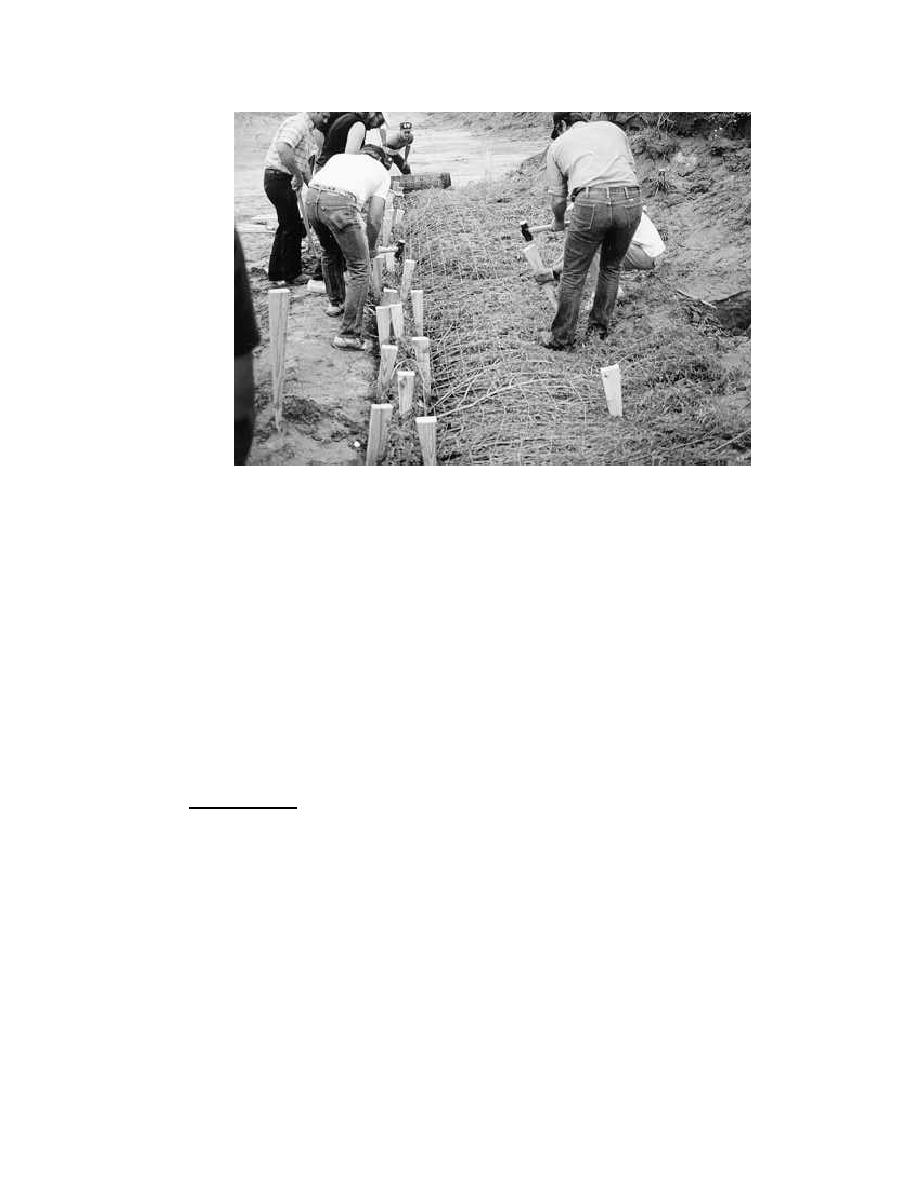
Appendix B: Bioengineering for Streambank Erosion Control -- Guidelines
Figure 27c. Stretching the woven wire tight and securing by
wedge-shaped stakes. Also, the wattling bundles are then laid
over the top of the basal ends of the willow in the trench and
secured tightly with wedge-shaped stakes.
Figure 27. Sequence of brushmattress and wattling bundle installation. Note that
this was done in dormant season in the fall even though some leaves remain on
branches.
estimated at 6.5 fps. The 350 ft radius of curvature in the project reach, as measured
off of a 1981 aerial photograph, results in increased localized velocities (Goldsmith, 1993).
A more detailed explanation of this example appears in the case study in Volume II.
Brush layering. Brush layering, also called branch layering, or branch packing, is used
in the splash zone, but only in association with a hard toe, such as rock riprap, in the toe zone.
It can also be used in the bank zone as discussed later. This is a treatment where live brush
that quickly sprout, such as willow or dogwood species, are used in trenches. Trenches are
dug 2-6 feet into the slope, on contour, sloping downward from the face of the bank 10 to
20 degrees below horizontal (Figures 28-29). Live branches are placed in the trench with
their basal ends pointed inward and no more than 6 inches or more than 18 inches of the tips
extending beyond the fill face (Leiser, 1994). Branches should be arranged in a criss-cross
fashion. Brush layers should be at least 4 inches thick (Leiser, 1994) and should be covered
with soil immediately following placement and the soil compacted firmly.
B-47




 Previous Page
Previous Page
